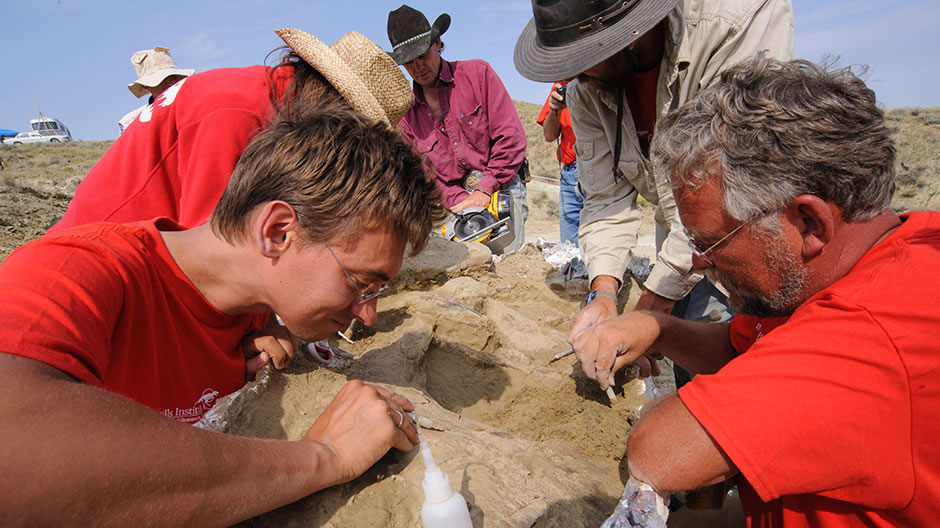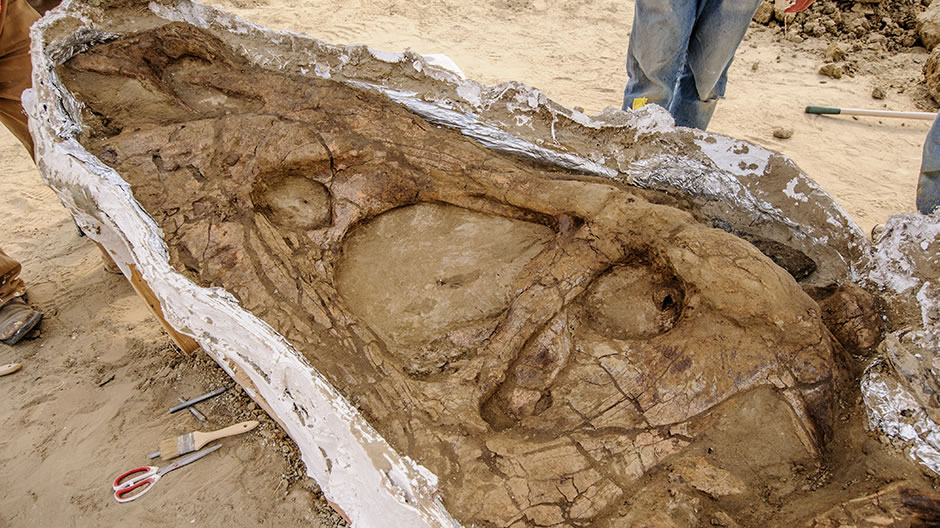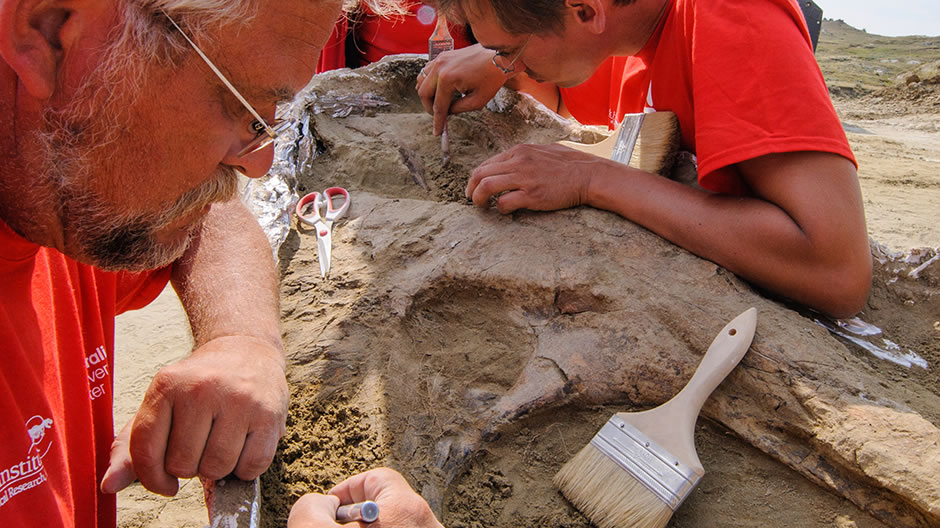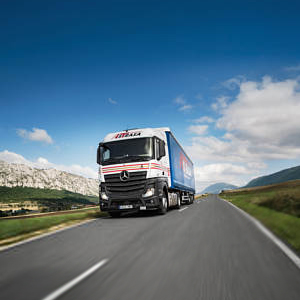
Dinosaur fossil on the road in the Actros
Panorama
The skull of a Tyrannosaurus rex travels in the Actros to the Fraunhofer Institute.

The dinosaurs are back, and not only on the silver screen. In early June, shortly before the cinema release of Jurassic World, using a specially-branded Actros, express haulier TNT transported a particularly valuable prehistoric cargo for the Naturalis Biodiversity Center in the Netherlands: the 690-kilogramme, approximately 66 million-year-old skull of a female Tyrannosaurus rex, whose skeleton was discovered in Montana in 2013 and which was acquired by Naturalis a year later.
The T-Rex skull began its 7800-kilometre journey in a specially-prepared, 1.90-metre-long wooden crate in South Dakota. From there it travelled to New York, from where it was flown to the TNT airport in Liège, Belgium. Now on European soil, the Actros with a T-Rex logo in the style of TNT's insignia came into play. The Mercedes-Benz truck, equipped with the latest tracking technology and driven by Special Service drivers, transported the wooden crate with its delicate fossil cargo to the Fraunhofer Development Centre for X-ray Technology (EZRT) in the German city of Fürth.
Its high-performance X-ray cameras have made an extraordinarily precise 3D image of the dinosaur skull. "We are proud to be able to support Naturalis", declares Willem Prinsen, chairman of the TNT board of management in Germany. "We possess comprehensive expertise and experience in the transport of exceptional cargo. Even so, transporting a prehistoric specimen of such high value for science is something very special for us, too." TNT's know-how in the field of transporting challenging cargo is based in part on the use of reliable Mercedes-Benz trucks equipped with state-of-the-art safety technology, as is this case with the Actros sporting the "T.rex ON BOARD" logo.
In September 2016 the original skeleton will then be displayed at Naturalis in Leiden.
Naturalis Biodiversity Center in Leiden, the Netherlands. Learn more: www.naturalis.nl/en
Photos: TNT Express



The Tyrannosaurus rex in brief:
For almost 140 years now it has spread awe and fear – the "King
of the Lizards". In the 1870s the first terrifyingly sharp, huge,
teeth were found in North America. However it wasn't until 1905 that
Henry Fairfield Osborne, then President of the American Museum of
Natural History, was able to explain convincingly that these teeth
belonged to a "new" lizard species, the Tyrannosaurus rex.
So far, around 30 specimens have been identified, some of them in the
form of almost complete skeletons. Over twelve metres long and
standing four metres tall, the largest individual found to date was
dubbed with the harmless-sounding name of "Sue". With her
estimated weight of 9.5 tons and powerful muscles, she was an
impressive hunter, even by dinosaur standards. Around 66 million years
ago she roamed the steppes, probably in the company of two youngsters,
always on the lookout for food, which she required in huge
quantities.



Comment
Please log in to post a comment.
No comments yet